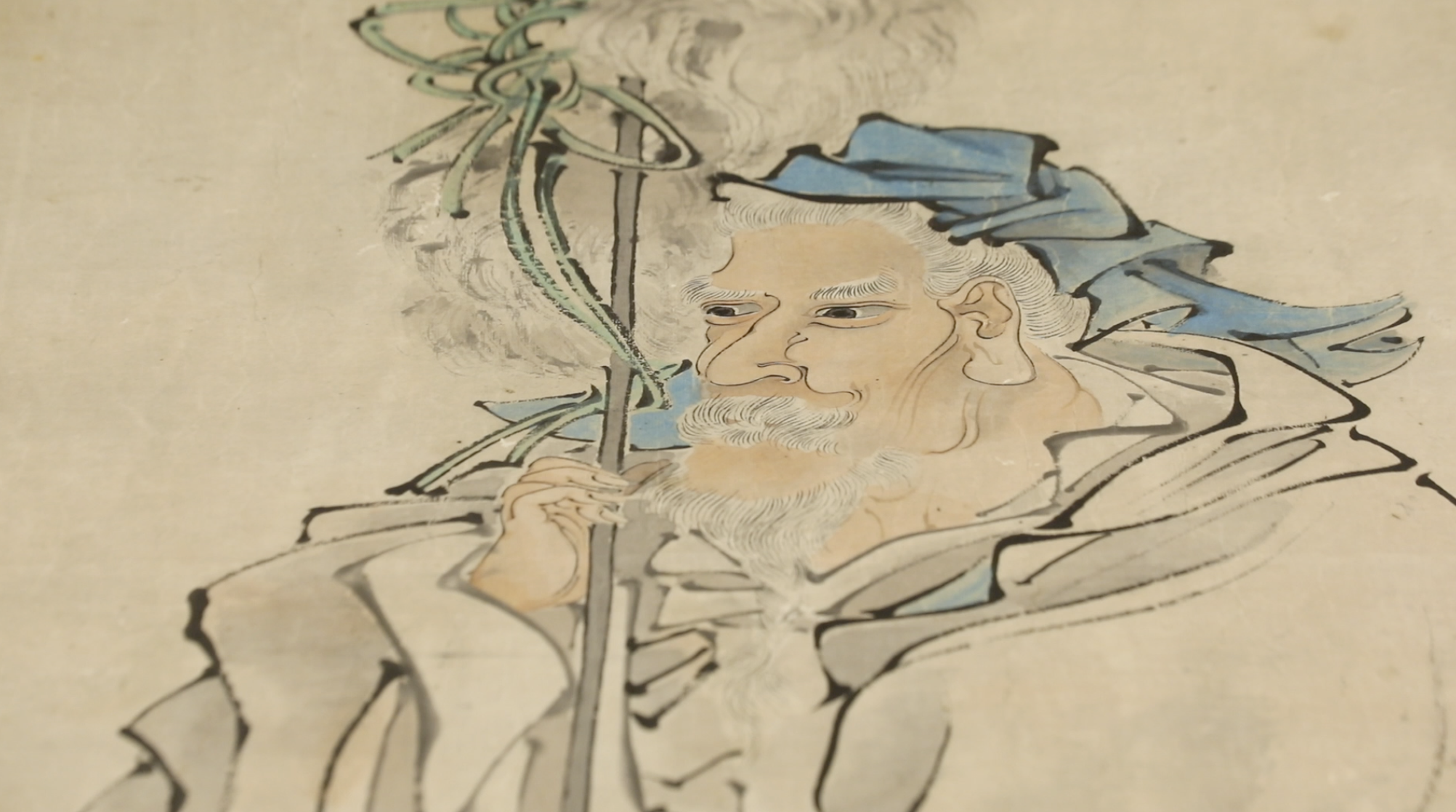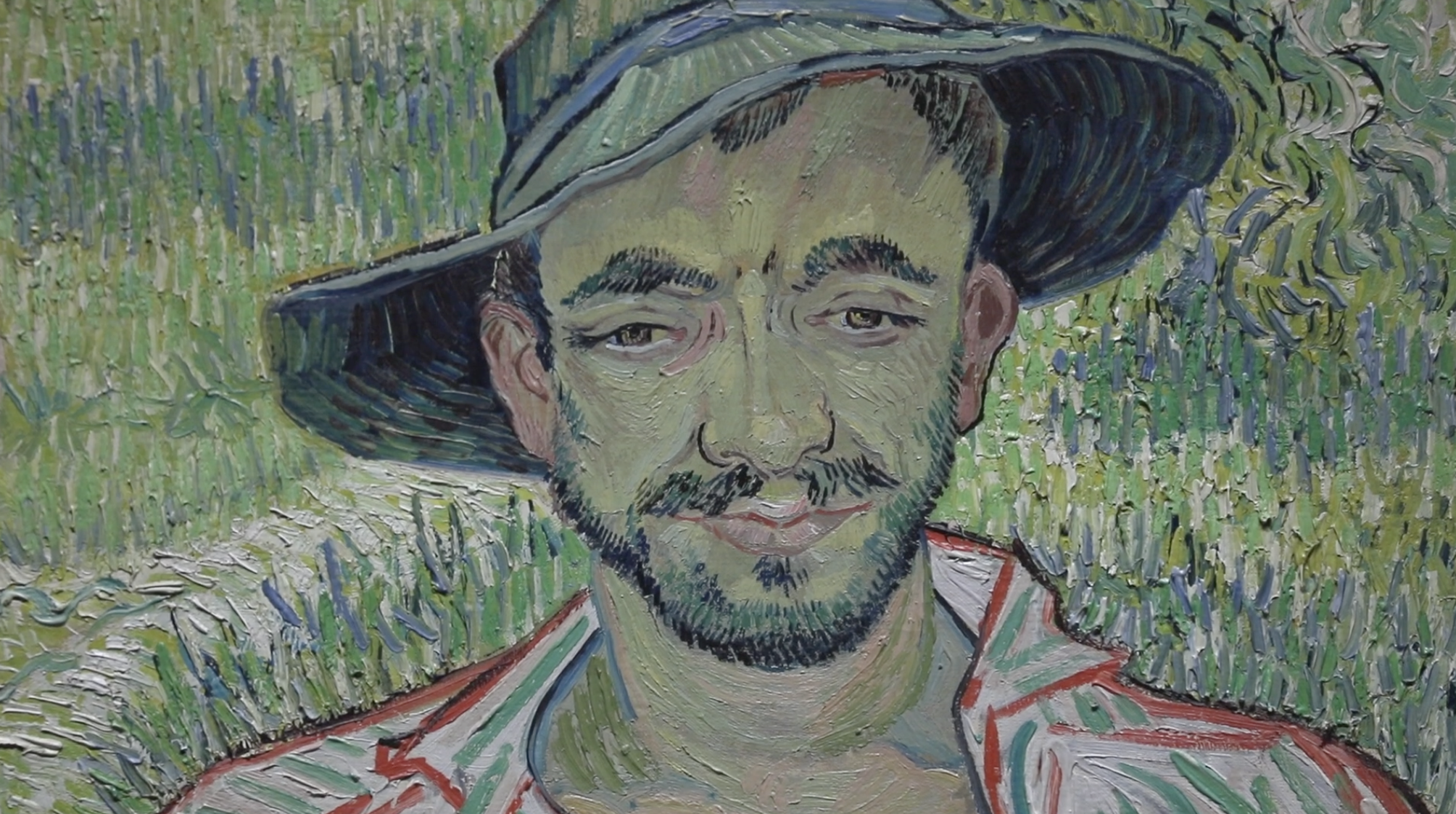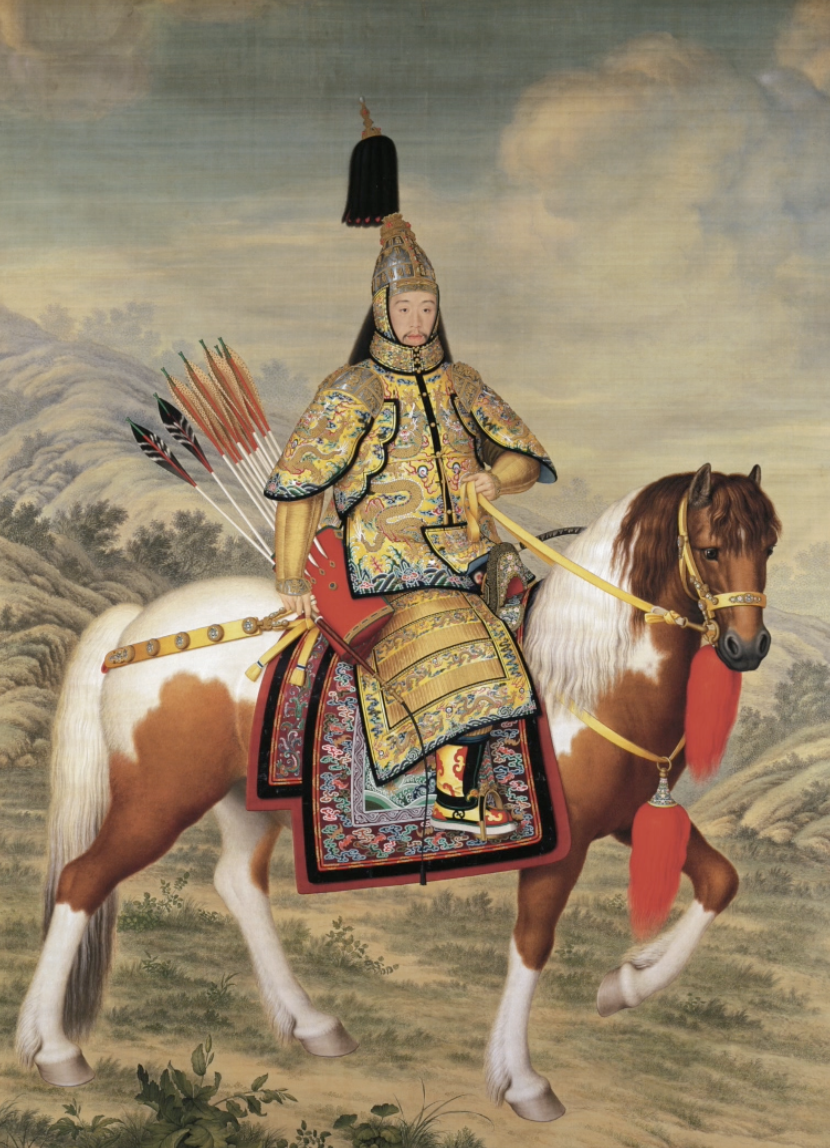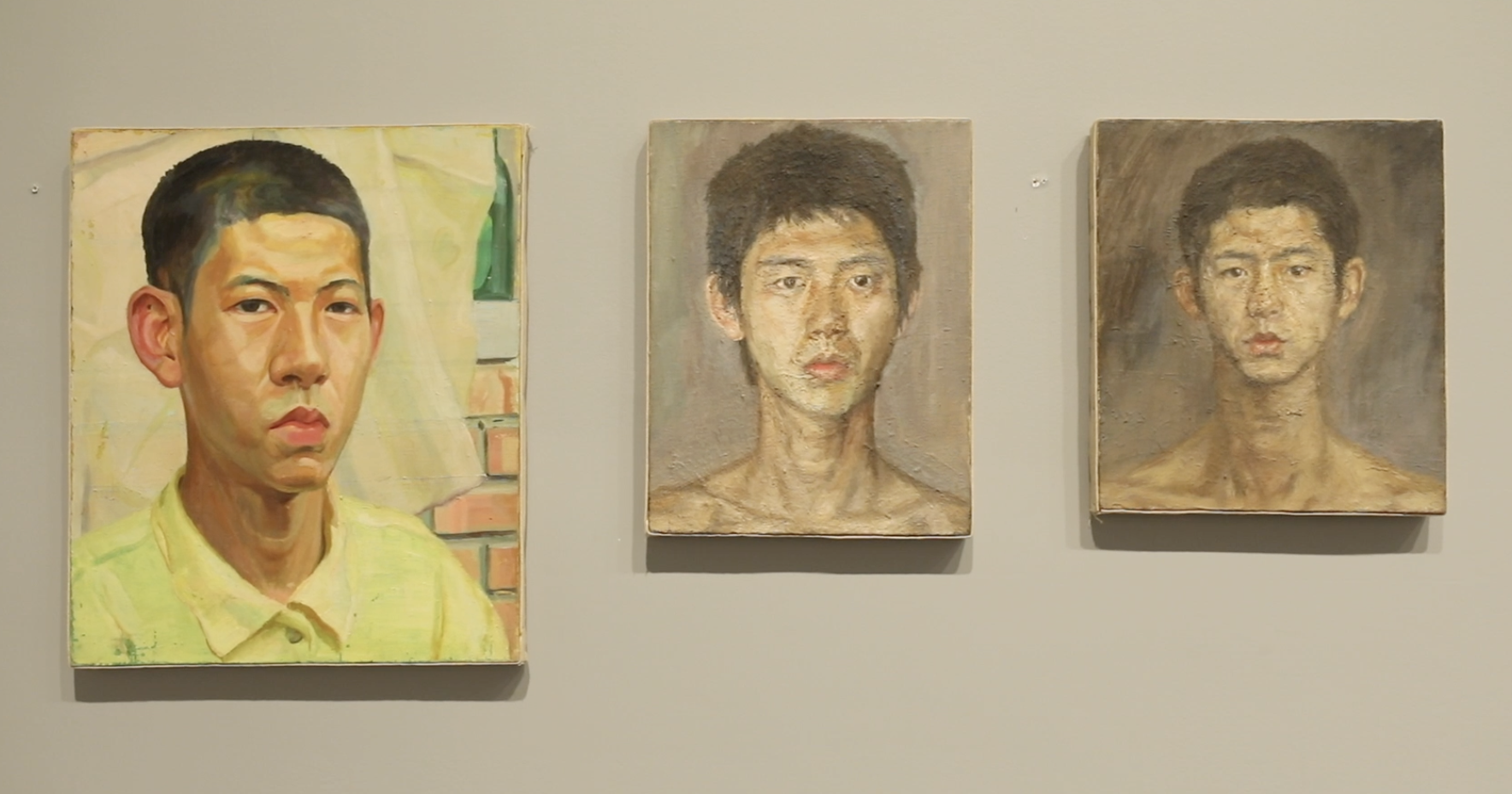Portraiture has a long history in both East and West. These works are like time capsules, revealing the preoccupations of its subjects in different centuries, and the way in which they lived. In the third episode of "East Meets West," a four-part art series produced by CGTN, we look at portraits from various periods and cultures.
15:12

The Tsinghua University Art Museum in Beijing houses a rich collection of old artworks, including some Qing Dynasty portraits completed hundreds of years ago. Among them, the portrait of Su Wu, a Chinese diplomat in the Western Han Dynasty some 2,100 years ago, shows a unique way of using lines by the artist Ren Bonian.
"When you look at the lines on his robe, it's like painting a rock. They are very hard and straight, well-defined lines," explained art curator and columnist Wang Jia.

Details of a portrait of Su Wu, a Chinese diplomat in the Western Han Dynasty some 2,100 years ago, by artist Ren Bonian /CGTN
Details of a portrait of Su Wu, a Chinese diplomat in the Western Han Dynasty some 2,100 years ago, by artist Ren Bonian /CGTN
Chinese portraits focus on presenting the inner spirit of their subjects, rather than aiming for a realistic depiction. Artists work with lines and space to make the form show the subject’s personality and demeanor.
The production process of Chinese portraits also varied in contrast to those made in the West. Chinese artists did not sit with their canvas in front of their subject. They painted from memory based on their impressions of their clients. This approach helped artists present portraits that brought out the subject's inner character, rather than highlighting an outer likeness. Meanwhile, "For Chinese portraiture, traditionally we don’t actually create spaces when we paint them. We rely on lines, instead of light and shade, so the portraits are entirely 2D," said Wang.

Details of "The Gardener" by Vincent van Gogh /CGTN
Details of "The Gardener" by Vincent van Gogh /CGTN

Details of "The Qianlong Emperor in Ceremonial Armor on Horseback" by Giuseppe Castiglione /CGTN
Details of "The Qianlong Emperor in Ceremonial Armor on Horseback" by Giuseppe Castiglione /CGTN
In the history of Chinese art, scholarly painters were often quite shy when it came to recording images of themselves. They preferred to use calligraphy and landscape painting to express their thoughts and aspirations. As China ushered in the 20th century, trends in modern Western art inspired many Chinese masters, and this was often reflected in their self-portraits.

Some of the self-portraits by contemporary artist Wen Ling /CGTN
Some of the self-portraits by contemporary artist Wen Ling /CGTN
Wen Ling represents an entirely new generation of artists compared to the style and works of his predecessors. He is a contemporary artist who paints self-portraits on the side as one of his long-term projects. In 2010, he began implementing his so-called "experience-unwinding" practices in his works. Wen said these have given him many new perspectives from which to view the world.
Different cultural and historical backgrounds generate paintings with varied themes, techniques, styles, and aesthetics. But when we put those differences aside, portrait paintings offer a visual account of how artists view others as well as themselves, and how human consciousness has developed over time.